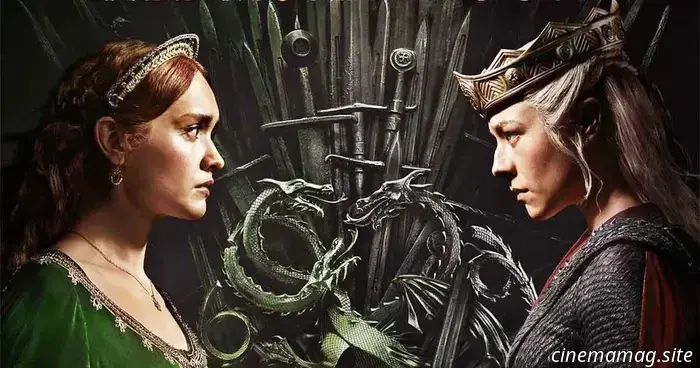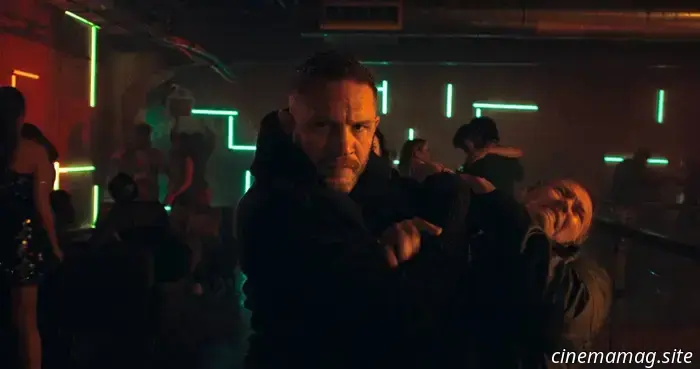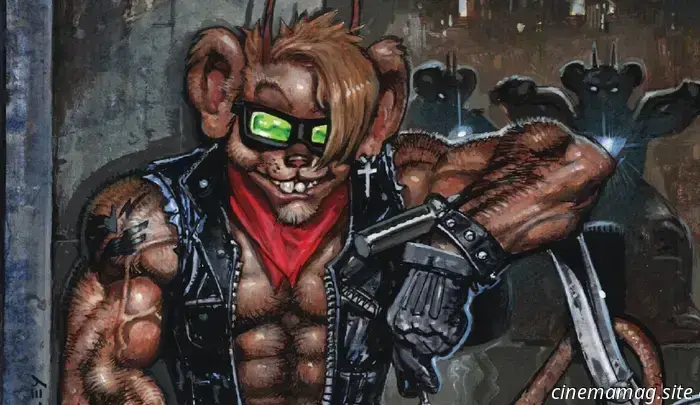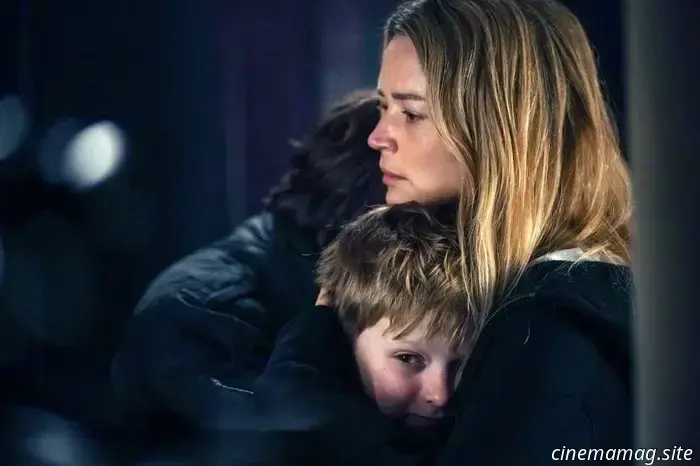-Movie-Review.jpg)
Until Dawn (2025) - Film Review
Until Dawn, 2025.
Directed by David F. Sandberg.
Featuring Ella Rubin, Michael Cimino, Odessa A’zion, Ji-young Yoo, Belmont Cameli, Maia Mitchell, Peter Stormare, Willem van der Vegt, and Mariann Hermányi.
SYNOPSIS:
A group of friends finds themselves trapped in a time loop, pursued by mysterious enemies who kill them in horrific ways, and they must survive until dawn to escape.
Not to focus on the notorious curse of video game adaptations, but the reason most fail can be summed up in two main points: either the filmmakers do not grasp the source material or the property doesn't translate well, often because it lacks a solid story to adapt or fails to work outside its original format.
Until Dawn fits into the latter category: it has a narrative, but it is also a survival horror game that engages players with moral decisions, quick-time events, and permanent character deaths (the game boasts over 100 endings, influenced by 22 key choices that dictate the player's experience) creating a distinct journey each time. Its charm lies not in packing in numerous horror clichés and tropes, but in the player's choices on how to navigate them, attempting to keep all characters alive, and experiencing endings that motivate multiple playthroughs—though that doesn't always imply success (one could deliberately seek to eliminate all characters as quickly as possible just for the thrill). This doesn't seem like a straightforward concept for a film adaptation.
Credit goes to David F. Sandberg (with Blair Butler and Gary Dauberman penning the screenplay that maintains the central idea but introduces new characters). In this version, an hourglass exists within a secluded house, surrounded by a violent storm that prevents the characters from leaving. Once emptied, it can grant them an escape. If they perish, the hourglass resets the entire scenario to when it was first turned, bringing everyone back to life.
The only task is to survive the night, which is more challenging than it sounds, especially with masked killers, supernatural entities, and enormous monsters lurking in the woods—should the characters decide to risk leaving through the storm. Additional lethal surprises are also in store, showcasing a witty approach and a playful tone regarding the material. Similar to Cabin in the Woods, this setup permits a plethora of horror tropes, with the goal of enjoying the experience.
Despite the intrigue about which horror subgenre the film will adopt next in its struggle to survive the night, witnessing some of the most familiar clichés unfold isn't completely effective here. While there are grotesque killings and clever elements to the plot, coupled with relentless pacing that rarely allows the characters a moment to breathe, the game's original selling point was providing those tropes through the interactivity of a video game, revealing personal decisions in such circumstances. However, it is refreshing to see a video game adaptation that treats a film like, well, a video game, resurrecting characters and compelling them to tackle the scenario in various ways. This also indicates that the filmmakers understand why the game garnered a fanbase. The results are mixed, with an engaging premise, a love for the genre, and some gruesome deaths tipping the scales in favor of the film.
As for the plot, it centers on Clover, portrayed by Ella Rubin, who mourns her mother's passing and her sister Melanie's (Maia Mitchell) year-long disappearance. Facing a history of depression and suicide attempts, her friends take Clover back to the isolated valley where Melanie vanished, hoping to find closure. Instead, they stumble upon a creepy gas station run by Peter Stormare (who also featured in the game as a psychologist) and are directed to the eerie home that holds various horrors.
The characters themselves offer little depth, mostly defined by singular traits: Megan (Ji-young Yoo) believes she can contact spirits; Abel (Belmont Cameli) is an ex-boyfriend still harboring feelings for Clover; while Clover's best friend Nina (Odessa A’zion) frequently changes partners, currently involved with Max (Michael Cimino), who proves to be the group's coward, wishing to avoid restarting the night if it means preserving his own chance to survive. This dynamic leads to some humorous exchanges, as characters end up killing each other, either to reset the hourglass or out of frustration with one another.
Until Dawn emphasizes the value of unity, whether with a grieving friend or amid an unending gore-filled nightmare. While the characters may lack depth, the themes surrounding friendship resonate genuinely. However, other aspects of the story feel either underdeveloped or frustratingly overt (there's no need for a character to explicate how each death represents their psychological fears, as if it were a simplified version of Silent Hill). The film struggles to successfully transition the game’s concept into another medium, but its lively, fast-paced, and affectionately chaotic approach to horror, alongside a live-die-repeat mechanic, largely allows the genre tropes to work in
-Movie-Review.jpg)
-Movie-Review.jpg)
-Movie-Review.jpg)
-Movie-Review.jpg)
-Movie-Review.jpg)
Other articles
 Star Wars: The High Republic Adventures – The Battle of Eriadu #1 - Comic Book Preview
Dark Horse Comics is set to release Star Wars: The High Republic Adventures – The Battle of Eriadu #1 next week, and you can check out an official preview of the issue below. The Battle of Eriadu has escalated into a critical moment in the conflict between the Nihil marauders and the courageous Jedi. On […]
Star Wars: The High Republic Adventures – The Battle of Eriadu #1 - Comic Book Preview
Dark Horse Comics is set to release Star Wars: The High Republic Adventures – The Battle of Eriadu #1 next week, and you can check out an official preview of the issue below. The Battle of Eriadu has escalated into a critical moment in the conflict between the Nihil marauders and the courageous Jedi. On […]
 House of the Dragon adds new cast members for its third season.
As production for the third season of House of the Dragon gets underway, HBO has revealed additional casting updates as the Targaryen civil war, commonly referred to as the Dance of the Dragons, fully ignites. Joining the cast this season are Tom Cullen (The Gold), Joplin Sibtain (Andor), and Barry Sloane (The Bay). They will join other newcomers, including Tommy […]
House of the Dragon adds new cast members for its third season.
As production for the third season of House of the Dragon gets underway, HBO has revealed additional casting updates as the Targaryen civil war, commonly referred to as the Dance of the Dragons, fully ignites. Joining the cast this season are Tom Cullen (The Gold), Joplin Sibtain (Andor), and Barry Sloane (The Bay). They will join other newcomers, including Tommy […]
.jpg) 4K Ultra HD Review – Motorpsycho! by Russ Meyer (1965)
Motorpsycho!, 1965. Directed by Russ Meyer. Featuring Haji, Alex Rocco, Steve Oliver, Lane Carroll, Russ Meyer, Sharon Lee, Coleman Francis, Holle K. Winters, and Arshalouis Aivazian. SYNOPSIS: A veteran and an alluring widow join forces to confront a brutal biker gang that assaulted their partners. Continuing from their excellent 4K UHD restorations of his […]
4K Ultra HD Review – Motorpsycho! by Russ Meyer (1965)
Motorpsycho!, 1965. Directed by Russ Meyer. Featuring Haji, Alex Rocco, Steve Oliver, Lane Carroll, Russ Meyer, Sharon Lee, Coleman Francis, Holle K. Winters, and Arshalouis Aivazian. SYNOPSIS: A veteran and an alluring widow join forces to confront a brutal biker gang that assaulted their partners. Continuing from their excellent 4K UHD restorations of his […]
 Havoc Review: Gareth Evans Revisits The Raid in a Familiar, Bone-Crunching Action Film
Tom Hardy's dual battle against corrupt police and the Triad, directed by the filmmaker of The Raid, is an impressive concept on paper. Combining Hardy’s return to genre films, such as MobLand, after spending several years in the Venom universe with Evans' skill in capturing and framing thrilling action sequences, instantly makes Havoc distinctive.
Havoc Review: Gareth Evans Revisits The Raid in a Familiar, Bone-Crunching Action Film
Tom Hardy's dual battle against corrupt police and the Triad, directed by the filmmaker of The Raid, is an impressive concept on paper. Combining Hardy’s return to genre films, such as MobLand, after spending several years in the Venom universe with Evans' skill in capturing and framing thrilling action sequences, instantly makes Havoc distinctive.
 Oni Press offers an early sneak peek of Biker Mice From Mars #1.
Continuing from last year's successful limited series, the Biker Mice from Mars return this June with an all-new ongoing series from Oni Press, showcasing the Nacelle Company’s groundbreaking trio of rodents. Take an early look at Biker Mice from Mars #1 below… The Red Planet is in upheaval . . . and [...]
Oni Press offers an early sneak peek of Biker Mice From Mars #1.
Continuing from last year's successful limited series, the Biker Mice from Mars return this June with an all-new ongoing series from Oni Press, showcasing the Nacelle Company’s groundbreaking trio of rodents. Take an early look at Biker Mice from Mars #1 below… The Red Planet is in upheaval . . . and [...]
 Exclusive: Virginie Efira Aims to Rescue Her Family in U.S. Trailer for All to Play For
Before Virginie Efira reunites with her Other People's Children director Rebecca Zlotowski for the Cannes-bound film Vie privée, one of her earlier festival selections is making its way to the U.S. Delphine Deloget’s drama All to Play For, which debuted at the 2023 Cannes Festival in Un Certain Regard, features Efira in the role of a bohemian.
Exclusive: Virginie Efira Aims to Rescue Her Family in U.S. Trailer for All to Play For
Before Virginie Efira reunites with her Other People's Children director Rebecca Zlotowski for the Cannes-bound film Vie privée, one of her earlier festival selections is making its way to the U.S. Delphine Deloget’s drama All to Play For, which debuted at the 2023 Cannes Festival in Un Certain Regard, features Efira in the role of a bohemian.
Until Dawn (2025) - Film Review
Until Dawn, 2025. Directed by David F. Sandberg. Featuring Ella Rubin, Michael Cimino, Odessa A’zion, Ji-young Yoo, Belmont Cameli, Maia Mitchell, Peter Stormare, Willem van der Vegt, and Mariann Hermányi. SYNOPSIS: A circle of friends find themselves ensnared in a time loop, pursued by enigmatic adversaries who kill them in horrifying ways, and they must endure until dawn […]
